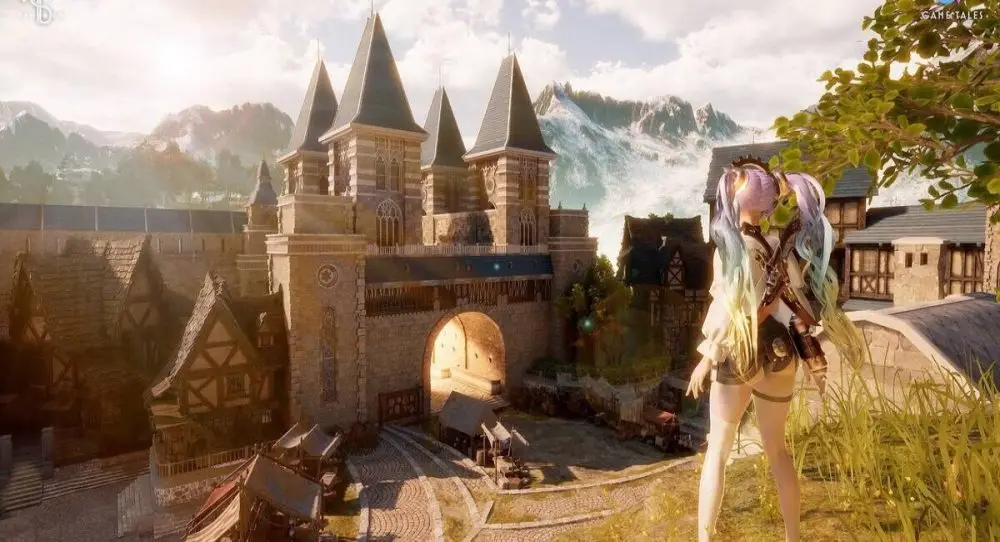Choosing a gaming computer in 2025 requires a clear understanding not only of tasks but also of current standards. Competition between GPU architectures, transition to DDR5, the rise of 2.5K and 4K gaming, the introduction of ray tracing in mid-range games — all of this has changed the approach. How to choose a gaming computer and prioritize correctly? This is a task that requires analysis, calculation, and clear logic. To ensure that the system does not become outdated after a couple of Steam updates, it is important to consider the balance of components, cooling, power supply, noise level, and upgradeability.
How to Choose a Gaming Computer Considering Workload
A gaming PC in 2025 should not just run games — it must handle them at high settings with power to spare. The main goal is to create a system that will not require replacing key components when new releases come out. Choosing a gaming computer means understanding that each detail works not in isolation but in a chain, and a weak link can drag down the entire assembly.

Central Processor: Core of Performance
In 2025, the lower limit is 6 physical cores and 12 threads. The optimal architecture is considered to be one with 8 cores and a high boost frequency of 4.5 GHz. Games no longer ignore multi-threading: engines use up to 10 threads in parallel — especially in simulators, open worlds, and strategies.
Differences:
-
Mid-range segment: 6–8 cores, frequency 4.2–4.8 GHz, TDP ~95–125 W.
-
Top segment: 12–16 cores, frequency from 4.8 GHz, cache from 30 MB.
Argument: even an RTX 4080 will experience frame drops on a weak CPU.
Graphics Card: Visual Core
The graphics card is the main element for any games. Choosing a gaming computer without considering it is not an option. In 2025, games in 2.5K and 4K become the norm, which means that video memory less than 12 GB is a compromise.
Specifications:
-
FullHD on ultra: 12 GB, 192-bit bus, 2880–3200 CUDA or similar cores.
-
2K: 16 GB, bus from 256 bits, memory frequency 18–20 GHz.
-
4K: 20–24 GB, ray tracing, DLSS or FSR 3.0, core frequency from 2.6 GHz.
Factor: the graphics card must maintain stable 60+ FPS without upscaling.
RAM: Capacity and Frequency
In 2025, DDR5 has firmly established itself as the standard. The minimum capacity is 16 GB, but for stable operation with streams, Discord, background tasks, and a browser, it is reasonable to install 32 GB.
Parameters:
-
DDR4 is no longer relevant — a bottleneck at frequencies up to 3200 MHz.
-
DDR5: from 5600 MHz, with minimal CL32 or lower latency.
-
Formula: 2×16 GB, dual-channel, XMP/EXPO profile support.
SSD: Instant Start and Fast Loading
Solid-state drives have completely replaced HDDs. Choosing a gaming computer means including at least a 1 TB NVMe SSD with PCIe 4.0.
Requirements:
-
Minimum: 1 TB PCIe 4.0, read speed from 5000 MB/s.
-
Recommended: additional SATA SSD or second NVMe for the system.
-
Outcome: abandoning HDD = reduced noise and improved responsiveness.
Thermal Mode and Cooling: Silence vs. Stability
A gaming system generates 400–600 W of heat at peak. Failing to consider this parameter is a mistake. Air cooling is suitable for TDP up to 125 W. Above that, only liquid cooling.
Differences:
-
240 mm AIO is suitable for CPUs up to 150 W.
-
360 mm AIO cools higher-end overclocked processors.
A tower cooler remains relevant if the case height is not limited.
Case and Power Supply: Reliability, Silence, Safety
The case is not just a box but an engineering solution. Choosing a gaming computer that will be quiet, cool, and clean depends on airflow and access to components.
Parameters:
-
ATX form factor is versatile and easily upgradable.
-
Airflow — a minimum of 3 fans: 2 intake, 1 exhaust.
-
Dust filters — for each fan.
-
Power supply — 80+ Gold, 750–850 W, with modular cables.
Impact of Resolution and Refresh Rate
Resolution and screen refresh rate determine the load on the graphics card.
Specifications:
-
1080p @ 144 Hz — comfortable for mid-range GPUs.
-
1440p @ 165 Hz — requires a balanced system.
-
4K @ 120 Hz — achievable only with high-end solutions supporting DLSS/FSR.
Building a powerful system for a 60 Hz monitor is not advisable — the graphics card remains underutilized. Conversely, weak hardware will not unleash the potential of a 240 Hz panel.
Choosing a Gaming Computer with Future in Mind
A gaming PC should not be built to the limit. The platform must withstand GPU replacement, RAM expansion, addition of a second SSD.
Parameters:
-
Power connectors — 12VHPWR, prepared for next-gen GPUs.
-
BIOS — upgradable, supports new CPUs.
-
Drive bays — minimum of 2×M.2 and 2×SATA.
Upgradability is insurance against becoming outdated. A PC without upgrade options loses relevance twice as fast.
Tips on Choosing a Gaming Computer in 2025
The final stage of selection begins not at the moment of purchase, but even earlier — with understanding real tasks and smart budget allocation. Choosing a gaming computer means first and foremost assessing the usage scenario, not chasing numbers. The PC should match the games that will actually be played, not abstract “future-proof” metrics.
Building for FullHD requires one architecture, while for 4K, a completely different one. Chasing a top-tier graphics card for 1080p gaming is a budget overspend without real benefit. Instead, it’s wiser to allocate some funds to a high-speed access SSD or to upgrading the cooling system, which will ensure stability under load.
One of the most common mistakes is mismatched components. Incompatible socket, limited case space, GPU power supply incompatibility — all these are consequences of insufficient verification of form factors and specifications. That’s why it’s important to plan the build in advance, check supported interfaces, and ensure that each system element works in synergy with the others.
If the goal is streaming, multi-screen mode, or gaming with mods, then choosing components for a gaming PC should consider additional threads and background processes. A standard build may handle a single session but may start to struggle when running OBS, Chrome, and Discord simultaneously.
Budgeting should always include a buffer: leave at least 10–15% for future upgrades. This allows installing additional memory, upgrading to a newer graphics card, or simply adding an SSD for a new system a year later. The reserve provides flexibility and eliminates the need for a complete rebuild.

Last but not least is the final testing after assembly. A common rookie mistake is to start the system and immediately jump into gaming. A proper approach includes stress tests for the CPU and GPU, temperature analysis under load, assessment of noise level and stability. Testing reveals issues before starting to use the system and allows timely adjustments — from replacing thermal paste to readjusting internal airflow in the case.
Conclusion
Choosing a gaming computer in 2025 means selecting an architecture not overloaded with marketing but capable of handling the impact of modern games. A rational approach, understanding tasks, and smart component selection create not just a “system unit” but a tool. Flexible, upgradeable, resistant to trends.
 en
en  ru
ru  de
de  ar
ar  es
es  hi
hi  fr
fr  nl
nl  it
it  pt
pt  el
el 









